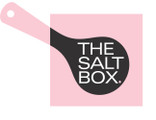
What are Bath Salts?
Since the time of the Ancient Egyptians, various cultures and groups of people have visited the Dead Sea for therapy. Since the beginning, Dead Sea salts have been used in various forms; for soaking, creams, soaps, scrubs and wraps, just as it is used today. The minerals found in bath salts are critical nutrients for our bodies, which are often not absorbed, or poorly absorbed, from our food.
At The Salt Box, we stock the three main types of baths salts – they are Dead Sea Salts (straight from the Dead Sea), Himalayan Salts (out of the Himalayan Mountains in Northern Pakistan) and Epsom Salts. All of our salts are 100% pure and natural. We don’t believe in adding nasties to your bath.
All types of salts are said to have health benefits when used as bath soaks due to nutritive elements through absorption by the skin. Now to the technical stuff …
- Dead Sea Salts are found in Dead Sea water, which has a salt content of 29%, compared to 4% in the oceans. The major ions of Dead Sea water include: chloride, magnesium, sodium, calcium and potassium.
- Epsom Salts are magnesium sulphate heptahydrate (usually just shortened to magnesium sulphate). It was originally obtained by boiling down mineral waters at Epsom, England. Officially, Epsom is not actually a salt, but a naturally occurring pure mineral compound of magnesium and sulphate.
- Himalayan Salts are from mined from the south-facing scarp of the Potwar Plateau in the Punjab region of northern Pakistan. It is buried amid mountains (literally) of sedimentary rock dating back over 500 million years ago. The salt that is taken out of here is revered as the purest of all the salts and is known as the ‘King Salt’ and originally served to royalty only (not common folk who used other salts) for both cooking and as a therapeutic ingredient. Indeed, Himalayan Salts, unlike Dead Sea salts and Epsom salts are the same salts used for food.
And just a word of caution! Before you go attempting to season tonight’s dinner with your Dead Sea or Epsom bath salts we strongly recommend you don’t. Epsom and Dead Sea salts are very different from food salts (and Himalayan). Common food salt is primarily (up to 95%) made up of sodium chloride - the chemical compound NaCl – and these salts are typically found in the Pacific Ocean. Dead Sea salts and Epsom salts have a stack of other minerals in them and both have low sodium chloride content (below 20% and often as little as 2.5) and are not suitable for eating. You may experience quite a drastic laxative effect if you do, which may not be very nice … for anyone!
How do Bath Salts Work?
This very question has long being occupying the minds of both the advocates and critics of bath salts. For many years there was debate about whether the minerals from bath salts could be absorbed into the human skin through soaking. Many claimed it did happen, some disagreed altogether, while others said that it is the combination of the salts and the ultra-violet radiation from the sun that is the reason why the Israeli beach vacation cure works.
Luckily, in 2006 Rosemary Waring (a British biochemist at the University of Birmingham) put an end to the debate. She undertook scientific work which proved that magnesium is well absorbed by the skin through bathing. Waring measured this through measuring magnesium and sulphate in the blood and urine before and after people had bathed in Epsom salts. She found them to be higher after the baths – with 16 out of 19 people having more magnesium and sulphate in their blood after the baths than before. This has proven that the minerals from bath salts can be absorbed in to the human skin, which explains how they might work.
Take a look at our range of Dead Sea, Himalayan and Epsom salts in our bath salts section here.
How do I use Bath Salts?
Bath salts are pretty simple to use and can be used in a variety of ways.
In the bath tub (for widespread symptoms)
Add 2-4 cups of salt to a warm running bath and, once dissolved, relax for approximately 20 minutes. Rinse or shower after with fresh water if you wish. Take 3 baths per week for 2-4 weeks. After symptoms subside reduce to maintenance levels – approximately once per week.
Foot or arm bath (for use on the extremities)
Use a watertight bowl and fill with warm water. Use approximately ¾ cups per 10 litres. Ensure the salt has dissolved and then submerge the affected area for approximately 20 mins. Rinse after with fresh water. Take 3 baths per week for 2-4 weeks. After symptoms subside reduce to maintenance levels – approximately once per week.
Body wrap (localised symptoms)
Dissolve in approximately ¾ cup of salt in 10 litres of warm water. When the salt is fully dissolved, saturate a small to medium sized towel with the salted water. Cover the affected area of skin with the towel for 20 minutes. Rinse with water after use. Repeat 3 times per week for 2-4 weeks. After symptoms subside reduce to maintenance levels – approximately once per week.
Our bath salts are 100% natural and are really sensitive to things that aren’t. So don’t use salts with your usual shower products as it will interfere with the minerals (and anyway, the bath salts have a cleansing effect on the skin so you shouldn’t need soaps). If you really want to go the extra, you can add ½ cup of olive oil to the bath to improve moisturisation.
Take a look at our range of Dead Sea, Himalayan and Epsom salts in our bath salts section here.




